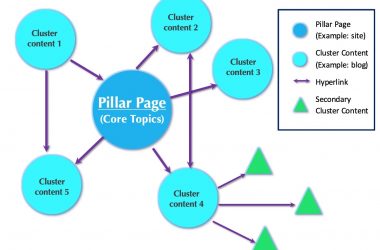There is a strong positive correlation between having a large number of good quality links in bound and out bound, and increased site traffic, hence more business. Within the world of SEO, there are a number of different link types, all with different functions. Continue reading to learn more about the wonderful world of internal linking, and how it can significantly benefit your SEO strategy.
What Is Internal Linking?
An internal link is created when you link one page of your website to another page of the same website. Implementing internal links has two main benefits that positively increase site traffic:
- Increasing visibility to Google
- Improving site navigation
Increasing Visibility to Google
Firstly, internal linking increases your visibility to Google, as linking is essentially used as a ranking system to differentiate between low and high quality content. The more links there are pointing to and associated with a site, including backlinks, the more valuable the content is inferred to be by Google search crawlers.
Improving Site Navigation
Secondly, internal linking also improves the ability for users to navigate your site. Better site navigation encourages users to spend more time on your domain, also known as lowering the bounce rate. This signposts to Google that users are enjoying your service and content, thereby also boosting your rank on the SERP.
These impacts combined make internal linking one of the most impactful SEO tactics according to Google.
Three Clicks To The Home Page
So, we all know that better site navigation improves your SEO, but what is an ideal site layout?
SEO experts strongly suggest maintaining a relatively shallow site structure that allows users to navigate themselves from the home page to important landing pages within three clicks. This ensures ample site organisation, without excessive navigational complexity. A deeply organised site, which is filled with unnecessary links, will not only increase the bounce rate, but will also increase page load time.
Excessive Linking
Quality over quantity is the golden rule when it comes to linking in SEO. Simply increasing link numbers irregardless of quality will impair your SEO strategy as opposed to boosting it. For example, associating your site with a large number of spam sites will likely lead Google to flag your site as spam.
To prevent your site being considered spam, it is important to prioritise high quality and strategic linking that leads high ranking content to and from your site.
Link All Important Pages
Optimising your content to make it rise to the top of the SERP is useless if users cannot navigate your site. And just because Google is able to find all the pages through your sitemap, doesn’t mean users can. In fact, it is relatively impossible for users to find a page without being directed via your website’s navigation page. Internally linking to all the important pages of your site on the homepage, and ensuring no page is left without a parent, makes navigating your site user friendly in addition to Google friendly.
Conduct an Internal Link Audit
How to Use Internal Links to Rank Higher in Google: Ahrefs
Even after properly organising and appropriately linking your site, internal linking issues like broken links can impact your SEO. Such issues are often silent killers, as they are not necessarily noticed immediately by you. Rather, your site will be picked up by google search crawlers which can significantly impact your SERP ranking.
To prevent this, you can conduct an internal link audit to check the health of your site’s links. This can be conducted using SEO tools such as Google Search Console.
Alternatively, if you are looking for a more time effective and expert internal link audit, turn to the SEO experts. SEO professionals have greater knowledge of software and tools that make the internal link audit process more timely and likely to be successful. Get in touch with the expert team at SEO Sydney to organise SEO support for your business today!




